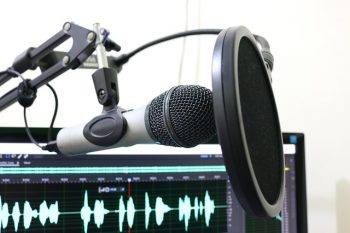Yesterday was a great day for open source at the Moscone Center in San Francisco.
At the I/O developers’ conference, host Google finally announced they are open sourcing the VP8 video codec they acquired with their purchase of On2 Technologies back in February. Google is packaging VP8 as part of a format they’re calling WebM, which will include Ogg Vorbis for audio playback. WebM is being released royalty free under a BSD-style license.
Not surprisingly, Google is planning to support VP8 in their Chrome web browser, with support already added in the Chromium nightly builds (early access builds of Chrome are scheduled to include VP8 capabilities on May 24). Also no surprise is the fact that Mozilla and Opera are both already on board, with support already included in Firefox nightly builds and Opera support “coming soon.” Google is also planning to offer the format as an option for YouTube playback ASAP.
What is surprising is the reaction by Microsoft, who has been saying that Internet Explorer 9 would support only the proprietary H.264 codec, although users would have the ability to download and install other codecs. In a blog yesterday on the Microsoft site, Dean Hachamovitch wrote:
“In its HTML5 support, IE9 will support playback of H.264 video as well as VP8 video when the user has installed a VP8 codec on Windows. “
It’s not a turnaround, but a freight train like MS isn’t able to make a U turn. I’m willing to bet, however, that by the time IE9 is released next year, VP8 will either be installed automatically by Microsoft or will be added by OEMs on new machines.
This leaves Apple the only major player not on the bandwagon. As of this writing there’s been no word from Cupertino, but it’s doubtful they will easily embrace VP8. Steve Jobs, who’s been fighting a war of sorts with Adobe’s Flash, has been standing behind H.264 as the standard for Apple’s mobile devices like the iPhone and iPad, and has even made patent threats against another open source video codec, Ogg Theora (which began as a derivation of VP3, an early version of VP8).
Apple will probably initially push back from the table over hardware concerns. In his now famous Thoughts on Flash, in which Jobs spelled out the reasons why he is opposed to Flash on Apple’s mobile devises, he wrote:
“To achieve long battery life when playing video, mobile devices must decode the video in hardware; decoding it in software uses too much power.”
As there is no hardware yet designed for use with VP8, this will give Apple an easy way to pass.
Further evidence that Cupertino may be a holdout can be found by looking at the Apple rumor mill. Last night, in an article on AppleInsider, Daniel Eran Dilger lambastes VP8:
“…Google is largely just releasing code that it obtained without doing the work to actually make it high quality or easy to use, assuming that once the code is available, developers in the community will fix it. But that strategy has rarely worked. Mozilla’s failure to fix and release anything functional other than portions of the Netscape web browser over the last decade is a notable example.”
The trouble is, Apple is reportedly developing their own implementation, Gianduia, to replace Flash as a defacto web standard. As Randall Bennett put it on yesterday’s SFGate:
“…Apple has little incentive to support VP8 in their mobile devices. Unless, that is, all-powerful YouTube pulls the plug on H.264 support all together, which we don’t expect. Google hasn’t been known traditionally for strong-arm tactics, and punishing iPad / iPhone owners doesn’t seem right, but never say never.”
I suspect that before the dust settles, Apple will be forced to support VP8, even on their mobile devices. Once the hardware issue is solved they will have no choice if they don’t want to be left out in the cold.
However, no matter how this ends up, it’s still a big win for open source.
Christine Hall has been a journalist since 1971. In 2001, she began writing a weekly consumer computer column and started covering Linux and FOSS in 2002 after making the switch to GNU/Linux. Follow her on Twitter: @BrideOfLinux







